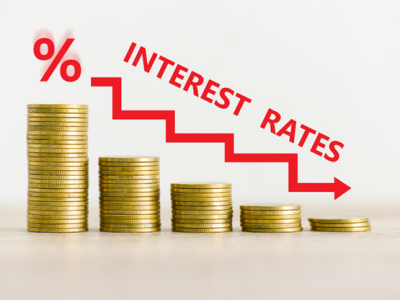Ever since the Covid pandemic outbreak hit the country, India has witnessed a low interest rate regime, aimed at spurring economic growth amidst the disruptions caused by the pandemic. This has been in line with the monetary policy measures adopted by Global Central Banks. However, in recent times, several Global Central Banks have already shown an inclination to increase their respective policy rates. Time may not be far when the benchmark interest rates start increasing in India. As such, the fixed income investors are caught in a dilemma to invest now at lower rates or wait to invest at a later date at higher interest rates. Considering the prevailing interest rate scenario, here is how FD investors can get a higher return:
- Taking Advantage of Tax Benefits – As per the current tax laws, interest income earned by NRIs on NRE and FCNR deposits is exempt from tax. Such deposits are also allowed to be repatriated outside India without any restrictions. As such, NRIs can use NRE/ FCNR deposits for investment in India, earn tax-free interest income and then be eligible to freely transfer funds back outside India without restrictions.
- Investing in Floating Rate Deposits – The NRE FD rates and NRO FD Rates are deregulated by the RBI. This means that the banks can set the interest rates on such deposits. For FCNR deposits, there is an upper ceiling set by the RBI, and the banks can set the interest rates within that ceiling. Further, the banks can also offer floating rate deposits linked with external benchmarks, like LIBOR (London Inter-Bank Offered Rate), SOFR (Secured Overnight Financing Rate), etc. Similarly, for rupee deposits for resident Indians, such benchmarks include T-bill rate, G-sec yields getting reset at periodic intervals. Investing in such floating rate deposits can help the depositors capitalize on the increasing interest rate scenario. The higher interest rate will be applied when the interest rates on FDs are reset periodically.
- Investing for Short Term – It is always advisable to lock in high interest rate yields for longer tenors in a decreasing interest rate scenario. Similarly, in an increasing rate scenario, it is always desirable to make fresh investments for the short term. This allows the depositors to roll over the deposits at higher interest rates.
- Creating an FD Maturity Ladder – Creating an FD maturity ladder is a prudent risk management strategy, which helps the depositors manage the interest rate risk across the interest rate cycles. This strategy works well across increasing and decreasing interest rate cycles. Creating an FD maturity ladder means that the deposits come for maturity and renewal at regular intervals. For example, if an individual wants to invest in FD for five years, it is better to split such deposit amount into five parts and have each part getting matured in different periods. When the fixed deposits come up for renewal at different time intervals, the depositor can capitalize on different interest rates prevailing over the periods. This allows them to generate a reasonable weighted average yield for the FD portfolio instead of relying on the interest rate scenario at a single point in time.
The depositors can use the above strategies to make the most of their fixed income investments and potentially generate a higher return on their deposits.
Disclaimer – The information provided in this article is for informational purposes only. You may consider consulting tax professionals for specific guidance for the applicable Income Tax rules, as tax benefits are subject to changes due to change in tax laws.











Comments